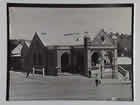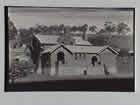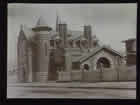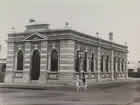Where is Boggy Creek or Bingo, Jericho or Scotch Hollow? Who today could find them on a map? Yet little goldfields such as these, along the creeks and rivers of heavily forested areas, were crucial to the development of Gippsland in the nineteenth century and beyond.
Gippsland’s main gold rushes took place in the 1860s and 1870s. Less dramatically successful than the discoveries in Victoria’s central goldfields, their economic importance to the region was immense. Gold brought people, and the capital they spent on their needs: roads and transport, food, shops, private and public buildings. The Gippsland gold towns never grew into large provincial cities like Bendigo or Ballarat, but solidly established centres like Bairnsdale and Sale were built on gold and the demands it set in train. Between 1854 and 1857 Gippsland’s population almost doubled to a total close to four thousand, as settlement spread along the route to the goldfields.
While Sale and Bairnsdale, Maffra and Heyfield which had been centres of a largely agricultural region, flourished, many of the gold towns faltered. Remote and mountainous Omeo remained a tiny isolated town, but with a rich history, told in the buildings of its gold years. On the hill overlooking the town the first Court House remains, where magistrate Alfred Howitt, one of Victoria’s most famous explorers and geologists, lived in the two back rooms in 1863. Later gold finds, in the 1880s, stimulated the building of a magnificent Post Office by talented architect A.J. Macdonald, who also designed Omeo’s splendid second Court House in 1892 and the Bairnsdale Court House also in 1892.
Omeo survived but did not grow. Other gold towns became ghost towns. Of these the most romantic is Walhalla which at its peak, between the late 1880s and 1910, had a population of eight to ten thousand. Now it is largely a tourist destination, a memorial to its own great days, when its Long Tunnel mine was the richest in Victoria. But the railway link with Melbourne did not come to Walhalla’s enclosed valley until 1910, when its gold was nearly worked out. Today the Walhalla Bandstand is a reminder of the strong community life of its heyday. When the gold ran out, there was nothing to sustain the miners in the mountain regions. Some moved to the plains or to the coast to become farmers. From 1910, others turned to the Wonthaggi coal mines.
Improved road and rail transport was also bankrolled by the prosperity due to gold. The road from Melbourne reached Sale in 1865 and the rail ink followed in 1878. Bairnsdale had its rail link in 1888. By the turn of the century both towns had achieved a growth and prosperity to justify the magnificent court houses which surprise the visitor in their scale and rich ornamentation. There are legacies of the goldfields in other parts of Gippsland, of which Sale’s Swing Bridge and Bairnsdale Mechanics’ Insitute are two reminders of the shaping influence of a remarkable period.
This text is reproduced from the publication, 'A Golden Heritage: Victoria 150' (2001) with the kind permission of Heritage Victoria







